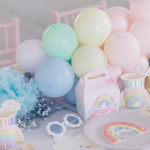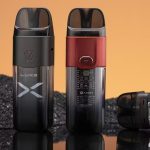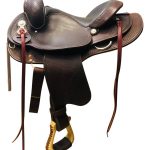Glass bottles are not just containers; they are a canvas for creativity. The shape of a glass bottle can convey a brand’s image and captivate consumers’ attention. In this complete guide to glass bottle shapes, we explore the endless possibilities that different bottle shapes offer to businesses.
From sleek and modern to vintage-inspired designs, glass bottle shapes can evoke emotions and reinforce the message a brand wants to communicate. Whether you’re in the beverage, skincare, or fragrance industry, choosing the right bottle shape is crucial for standing out in a crowded market.
In this article, we dive deep into the world of glass bottle shapes, discussing popular options like the classic cylinder, elegant square, curvaceous oval, and unique geometrical designs. We’ll also explore how bottle shape influences ergonomics, functionality, and brand perception.
Whether you’re a business owner looking to launch a new product or a designer seeking inspiration, this guide will provide you with valuable insights into the different glass bottle shapes available in the market. Get ready to discover the power of shape in making your brand shine.
The importance of bottle shape in packaging design
The shape of a glass bottle goes beyond aesthetics; it plays a vital role in packaging design. The right bottle shape can enhance the product’s appeal, differentiate it from competitors, and even influence how consumers perceive the brand.
Firstly, bottle shape is closely tied to brand identity. For example, a sleek and modern bottle shape communicates a contemporary and high-end image, while a vintage-inspired design conveys a sense of nostalgia and craftsmanship. By choosing a bottle shape that aligns with their brand values, businesses can create a cohesive and memorable visual identity.
Secondly, bottle shape affects ergonomics and functionality. A well-designed bottle shape should be easy to hold, pour, and use. Considerations such as grip, balance, and ease of opening play a crucial role in the overall user experience. A poorly designed bottle shape can lead to frustration and dissatisfaction among consumers, impacting brand perception and repeat purchases.
Lastly, bottle shape contributes to product differentiation. In a crowded market, standing out is essential for attracting consumers’ attention. By opting for a unique and eye-catching bottle shape, businesses can create a distinctive presence on store shelves and online platforms. A memorable bottle shape can spark curiosity and make consumers more likely to try a product, especially when competing with similar offerings.
Choosing the right bottle shape requires careful consideration of brand identity, functionality, and market positioning. In the next sections, we will explore popular glass bottle shapes and their characteristics to help you make an informed decision.
Common glass bottle shapes and their characteristics
Glass bottle shapes come in a variety of options, each with its own unique characteristics. Understanding the different shapes can help businesses select the one that best suits their product and target audience. Let’s take a closer look at some common glass bottle shapes:
1. Classic cylinder
The classic cylinder shape is a timeless choice for glass bottles. With its straight sides and rounded shoulders, it offers a clean and versatile design that works well across various industries. The cylindrical shape provides ample label space, making it ideal for showcasing branding and product information. Its simplicity and familiarity also make it a popular option for consumers.
However, the classic cylinder shape may lack the visual impact and uniqueness desired by brands aiming to stand out in a crowded market. While it is a safe choice, it may not be the best option for those seeking a bold and innovative design.
2. Elegant square
The square bottle shape exudes elegance and sophistication. It offers a sleek and modern look that appeals to consumers who appreciate contemporary design. The straight sides and sharp edges of a square bottle provide a polished and refined aesthetic, making it a popular choice for premium brands in various industries.
The square shape also offers practical benefits. Its flat sides make it easy to stack, maximizing storage efficiency. Additionally, the square shape allows for a comfortable grip, enhancing the overall user experience.
However, the square shape may not be suitable for all products. Its clean lines and sharp corners may not convey the desired image for brands aiming for a softer or more organic feel. Consider the brand’s identity and target audience when deciding whether the square shape is the right fit.
3. Curvaceous oval
The oval bottle shape offers a smooth and curvaceous design that exudes elegance and femininity. It is often associated with beauty and skincare products, as its graceful curves evoke a sense of luxury and indulgence. The oval shape offers a unique visual appeal that stands out from more traditional bottle shapes.
In addition to its aesthetic appeal, the oval shape offers practical advantages. Its ergonomic design fits comfortably in the hand, making it easy to hold and use. The elongated shape also allows for creative label placement, enhancing the overall visual impact.
However, the oval shape may not be suitable for all products or industries. Its distinctive design may not align with the brand’s identity or target audience. Consider the overall brand positioning and the product’s intended message before opting for an oval bottle shape.
4. Unique geometrical designs
For those seeking to make a bold statement, unique geometrical bottle shapes offer endless possibilities for creativity and brand differentiation. These unconventional shapes can range from asymmetrical forms to intricate patterns, pushing the boundaries of traditional bottle design.
Unique geometrical bottle shapes can be particularly effective for niche or artisanal brands. They catch the eye and create a sense of curiosity and intrigue. However, it’s essential to strike a balance between innovation and functionality. While these shapes can be visually striking, they must still be practical to use and store.
When considering a unique geometrical bottle shape, it is crucial to thoroughly test the functionality and feasibility of the design. Collaborating with experienced glass manufacturers and packaging experts can help ensure that the final product meets both aesthetic and functional requirements.
Choosing the right bottle shape for your product
Selecting the right bottle shape for your product involves considering various factors, including brand identity, target audience, functionality, and industry standards. Here are some key considerations to keep in mind during the decision-making process:
1. Brand identity and target audience
The bottle shape should align with your brand’s identity and target audience. Consider the emotions and characteristics you want to evoke. Are you aiming for a sleek and modern image or a vintage-inspired feel? Understanding your brand’s identity and your target audience’s preferences will help guide your choice.
2. Functionality and ergonomics
A well-designed bottle shape should be functional and easy to use. Consider how the bottle will be held, poured, and stored. Ensure that the shape offers a comfortable grip and allows for easy dispensing. Test the design from a user’s perspective to ensure it meets ergonomic requirements.
3. Industry standards and regulations
Different industries may have specific requirements and regulations regarding bottle shapes. Consider industry standards, such as neck sizes and closures, to ensure compatibility with existing packaging and manufacturing processes. Consulting with packaging experts and manufacturers can help navigate these considerations.
4. Market positioning and competition
Analyze the market landscape and assess your competition. Look for opportunities to differentiate your product through bottle shape. Consider how your chosen shape will stand out on store shelves and online platforms. A unique and eye-catching bottle shape can help attract consumers’ attention and make your product more memorable.
By carefully considering these factors and conducting thorough research, you can select a bottle shape that aligns with your brand’s vision, appeals to your target audience, and enhances the overall user experience.
Trends in glass bottle shapes
The world of packaging design is ever-evolving, and glass bottle shapes are no exception. Keep an eye on the latest trends to stay ahead of the competition and ensure your products remain relevant in the market. Here are some current trends in glass bottle shapes:
1. Minimalist designs
Minimalism continues to be a popular trend in packaging design, including glass bottle shapes. Clean lines, simple forms, and understated elegance are highly sought after by consumers who appreciate a sleek and uncluttered aesthetic. Minimalist bottle shapes often feature subtle curves or geometric shapes, emphasizing simplicity and modernity.
2. Sustainable and eco-friendly shapes
With increasing consumer demand for sustainable and eco-friendly packaging, bottle shapes that promote recyclability and reduce waste are gaining popularity. These shapes often focus on functionality and practicality, allowing for easy recycling and reuse. Examples include bottles with removable labels or unique closures that minimize material waste.
3. Retro and vintage-inspired designs
Nostalgia is a powerful marketing tool, and bottle shapes that evoke a sense of bygone eras are making a comeback. Vintage-inspired designs, such as Art Deco or Victorian-era bottle shapes, tap into consumers’ desire for nostalgia and authenticity. These shapes often feature intricate details, ornate patterns, and bold silhouettes.
4. Innovative and unconventional shapes
Brands looking to make a statement and stand out from the crowd are turning to innovative and unconventional bottle shapes. These shapes push the boundaries of traditional design, often incorporating asymmetry, unique angles, or unexpected combinations of shapes. They create a sense of curiosity and intrigue, capturing consumers’ attention.
While trends can provide inspiration, it’s important to consider the long-term viability and suitability of a particular shape for your brand and product. Trends come and go, but a well-thought-out bottle shape should withstand the test of time.
Unique and innovative glass bottle shapes
Innovation is key to capturing consumers’ attention in a competitive market. Unique and innovative bottle shapes can become a brand’s signature, setting them apart from competitors. Here are some examples of brands that have successfully embraced unique and innovative glass bottle shapes:
1. Coca-Cola Contour Bottle
One of the most iconic glass bottle shapes in the world, the Coca-Cola Contour Bottle, is instantly recognizable. Its curvaceous silhouette is not only aesthetically pleasing but also functional. The shape allows for a comfortable grip, making it easy to hold and pour. The Contour Bottle has become synonymous with the Coca-Cola brand and has played a significant role in its marketing success.
2. Chanel No. 5 Perfume Bottle
The Chanel No. 5 perfume bottle is a testament to the power of simplicity and elegance. Designed by Coco Chanel herself, the rectangular bottle with clean lines and a minimalist label has become an icon in the fragrance industry. Its timeless design has remained virtually unchanged since its creation in the 1920s, reflecting the enduring appeal of a well-designed bottle shape.
3. Absolut Vodka Bottle
The Absolut Vodka bottle is known for its distinctively tall and slender shape. The elongated design not only stands out on store shelves but also serves a functional purpose. The slender neck allows for easy pouring and precise measurements, making it a favorite among bartenders and mixologists. The Absolut Vodka bottle showcases how a unique shape can become synonymous with a brand and contribute to its success.
4. Jo Malone London Cologne Bottles
Jo Malone is renowned for its elegantly simple fragrance bottles. Each fragrance in the collection features a unique bottle shape, with rounded shoulders and a minimalistic label. The diverse range of bottle shapes adds a sense of collectibility and personalization, allowing customers to curate their own fragrance collection. Jo Malone’s innovative approach to bottle shapes has helped establish the brand as a leader in the fragrance industry.
These examples highlight how unique and innovative bottle shapes can become an integral part of a brand’s identity and contribute to its success. By embracing creativity and thinking outside the box, businesses can create bottle shapes that captivate consumers and enhance their overall brand experience.
Tips for designing a glass bottle shape
Designing a glass bottle shape requires a combination of creativity, functionality, and feasibility. Here are some tips to consider when designing a bottle shape:
- Research and analyze the market: Understand current trends, consumer preferences, and competitor offerings. Identify opportunities for differentiation and find inspiration from successful bottle shapes.
- Consider brand identity: The bottle shape should align with your brand’s identity and values. Determine the emotions and characteristics you want to evoke and ensure the shape reflects those qualities.
- Collaborate with packaging experts: Seek the guidance of experienced packaging designers and manufacturers. They can provide valuable insights on feasibility, functionality, and manufacturing considerations.
- Test functionality and ergonomics: Ensure the bottle shape is easy to hold, pour, and use. Test the design from a user’s perspective to identify any potential issues or improvements.
- Balance aesthetics and practicality: While an eye-catching design is important, it should not compromise functionality. Strive for a balance between innovation and usability.
- Consider manufacturing processes: Understand the limitations and capabilities of glass manufacturing processes. Collaborate closely with manufacturers to ensure the design can be successfully produced.
- Prototype and iterate: Create prototypes of your bottle shape to assess its visual appeal and functionality. Use feedback from stakeholders and potential users to refine the design.
Designing a glass bottle shape is a creative and iterative process. By following these tips and incorporating feedback from various stakeholders, you can create a bottle shape that not only enhances your product but also strengthens your brand’s identity.
Manufacturing considerations for different bottle shapes
Once you have finalized the design of your glass bottle shape, it’s essential to consider the manufacturing process. Different bottle shapes may require specific manufacturing techniques or considerations. Here are some key manufacturing considerations for different bottle shapes:
- Mold design: The design of the mold plays a crucial role in manufacturing glass bottle shapes. Complex shapes may require intricate molds, which can increase production costs. Collaborate closely with glass manufacturers to ensure the mold design meets your desired shape and is feasible for large-scale production.
- Glass thickness: The shape of the bottle can influence the thickness of the glass required. Certain shapes may require thicker glass to maintain structural integrity. Consider the intended use of the bottle and consult with manufacturers to determine the appropriate glass thickness.
- Blow molding techniques: Glass bottle shapes are typically created through blow molding techniques. Different shapes may require specific blowing techniques, such as stretch blow molding or extrusion blow molding. Work closely with manufacturers to select the most suitable technique for your desired shape.
- Quality control: As with any manufacturing process, quality control is essential when producing glass bottle shapes. Ensure that your manufacturing partners have robust quality control measures in place to maintain consistent quality and prevent defects.
- Decoration and labeling: Bottle shapes may impact the decoration and labeling process. Consider how the shape will affect label placement, printing techniques, and any additional decorative elements. Collaborate with packaging experts and printers to ensure compatibility between the shape and desired.




